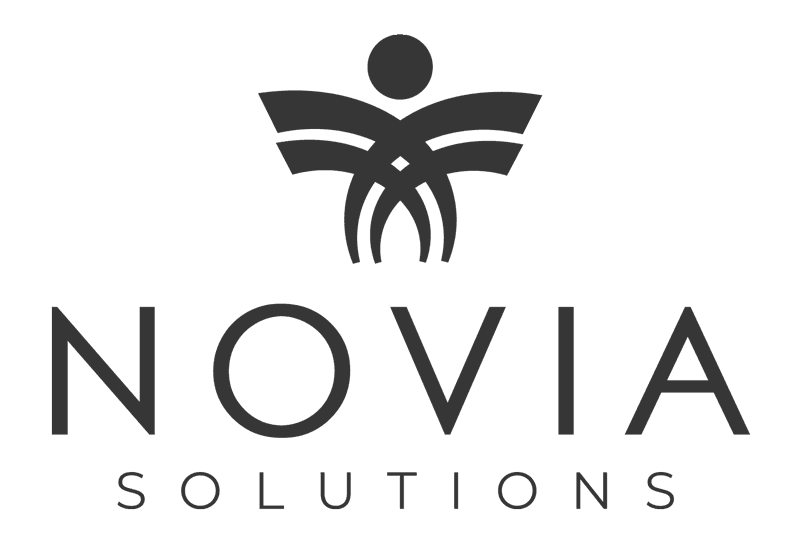With predictive data analytics becoming a hot topic in the healthcare industry, many of our clients are asking how analytics can help them with their staffing needs – beyond traditional productivity analysis. One of the opportunities we see is the use of predictive data analytics to develop a proactive recruiting model, which is a proven method to improve nurse retention. In a recent webinar hosted by Novia Strategies and in a presentation at the ASHHRA conference, David Murdock, Managing Director and Staffing and Productivity practice lead for Novia Strategies, shared his thoughts on how proactive recruiting can improve nurse retention. Rhonda Hodoh, a consultant with Novia Strategies and staffing subject-matter expert, joined him.
We recently had the opportunity to sit down with David and Rhonda to ask them some more questions about proactive recruiting models. Here’s are some highlights of that conversation.
Q: What is the primary benefit of a proactive recruiting model?
The proactive and predictive model of recruiting will allow you to improve the level of decision-making related to the timing of recruiting and hiring processes for which, in turn, will positively impact retention.
Q: What are some of the signs that an organization might benefit from a proactive recruiting model?
Some of the signs include:
- Higher percentage of early tenured nurses compared to industry average
- High levels of employee turnover
- Ratio of less tenured nurses to more tenured nurses
- High use of premium pay
- Duration from vacancy to the time the new nurse is on the unit
Recent research shows that it takes an average of 82 days to fill a bedside nurse vacancy. When you add 6 weeks of training time, that means it will take an average of 140 days before the bedside RN would actually be on the unit and fully productive.
Let me give you some data behind this. Recent research shows that it takes an average of 82 days to fill a bedside nurse vacancy (average across all specialties). When you add 6 weeks of training time, that means it will take an average of 140 days before the bedside RN would actually be on the unit and fully productive. The predictive analytics allows clients to predict a need, which increases the time to source and onboard “right fit” candidates.
Q: How does proactive recruitment improve retention?
Retention really starts from the application process when you begin to screen the applicants. Even at this early stage, effective recruiters are considering the organizational culture fit for the candidates. The predictive model of recruiting will allow you to be proactive and thus increases the time available for recruiting. This extra time allows recruiters to be more selective with those candidates, which in turn will positively impact retention.
Q: How does a proactive recruitment model work?
First, let me outline the traditional recruiting process that we see at many hospitals. To hold managers fiscally accountable for the positions they are requesting be filled, many organizations wait to initiate the recruiting process when a position becomes vacant or when a new position is created. In other words, the recruiting process begins with the position requisition based on an existing vacancy. Only then do recruiters begin to source, identify and interview candidates. Eventually a candidate is hired; but even after hiring, they still need to complete orientation and training before becoming competent and fully productive. During the “ramp up to competence”, those shifts are often filled with premium pay, overtime and agency staff.
During the “ramp up to competence”, those shifts are often filled with premium pay, overtime and agency staff.
A proactive recruitment model collapses the time from when the need arises to when the need is filled. This model isn’t a one-size-fits-all approach. Rather, it’s a lean-inspired approach customized to each client. Simply stated, we review the recruitment process, zeroing in on opportunities to streamline this process. Through any streamlining though, it is critical to maintain clear lines of accountability for the hiring processes and staffing decisions.
To further elaborate, decreasing the time from the need arising to the need being filled requires a disruptive approach. With the predictive analytical model of the proactive recruiting process, you’re able to predict a need. With that need being predicted, and having confidence in the need based on historical demand (workload) and supply (candidate pool, employee turnover and training needs), the recruiting process begins in anticipation of the need arising. By the time that need actually arises, the need is filled and the timeframe has reduced significantly.
Q: What data do you need to develop a proactive recruitment model?
There are quite a few data requirements that the proactive recruitment model needs, including:
- Granular historical workload data (e.g., census data points every four hours for nursing units)
- Operational staffing plans that cover all levels of workload that you have experienced
- Standardized roles and job titles where organization-specific job titles are mapped to standard job titles (e.g. RN1, RN3N are mapped to RN)
- Up-to-date position rosters, ideally one position control that is centrally located and maintained for the entire organization and centrally located
- Data to calculate true FTE turnover, which is different from industry standard calculations
- Budget by skill mix
- Recruiting data to include pipeline and time to fill
- Training requirements for new and experienced staff
Q: What other information do you need?
It’s important to understand any process gaps that would impede having a fully integrated proactive recruiting model. For example, the model will benefit from having a position requisition process flexible enough that allows for the proactive recruiting of those positions. Based on the predictive need, you want to be able to release those positions even though they may not yet be vacant. Some of the leading organizations are actually doing this based on predictive need, and others are building a pipeline based on predictive need but then waiting until the position is closer to being vacant.
It’s also critical to understand the onboarding and training expectations, and to ensure they are standardized and consistent. Of course there is some variability with regards to candidates’ skills and the amount of time it takes them to get up to speed, but being able to assign a timeframe is needed for the predictive model.
Of course there is some variability with regards to candidates’ skills and the amount of time it takes them to get up to speed, but being able to assign a timeframe is needed for the predictive model.
Finally, a proactive recruitment model is best supported by a centralized, up-to-date position control process that provides contemporary visibility of what positions are available and what positions are filled. Recently, to help a client fill a process gap of having an up-to-date position control roster, we developed a separate database that takes data from the cloud-based employee roster and produces a position control listing on a biweekly basis that is used in the proactive recruiting model.
Q: How flexible is a proactive recruitment model?
The most recent predictive recruitment model that we developed will predict the need for a 12-month period. There is the ability to override or update certain assumptions in the model as the recruiter performs analysis of various recruiting scenarios. For example, if there are upcoming retirements that haven’t typically occurred in the past, the recruiter and/or department leader can manually input that data in the model. The model enhances the partnership between recruiter and department lead as they collaborate to ensure staffing levels are appropriate.
Q: What are some of the key lessons you’ve learned in designing and implementing predictive recruitment models for hospitals and healthcare systems?
As with many of our staffing related projects, we learned that even the most highly performing organization can have data and process gaps that can impair the implementation of new staffing models. Projects like this will also reinforce the importance of ensuring that key elements are in place prior to initiating the “build” of the actual model. These include:
- Strong project management coordination
- Active involvement of HR, recruiters and department leadership
- Support and partnership from Information Technology
- Requisite data and clear understanding of any data gaps
- Position control process and roster
- Change control process and transition plan


